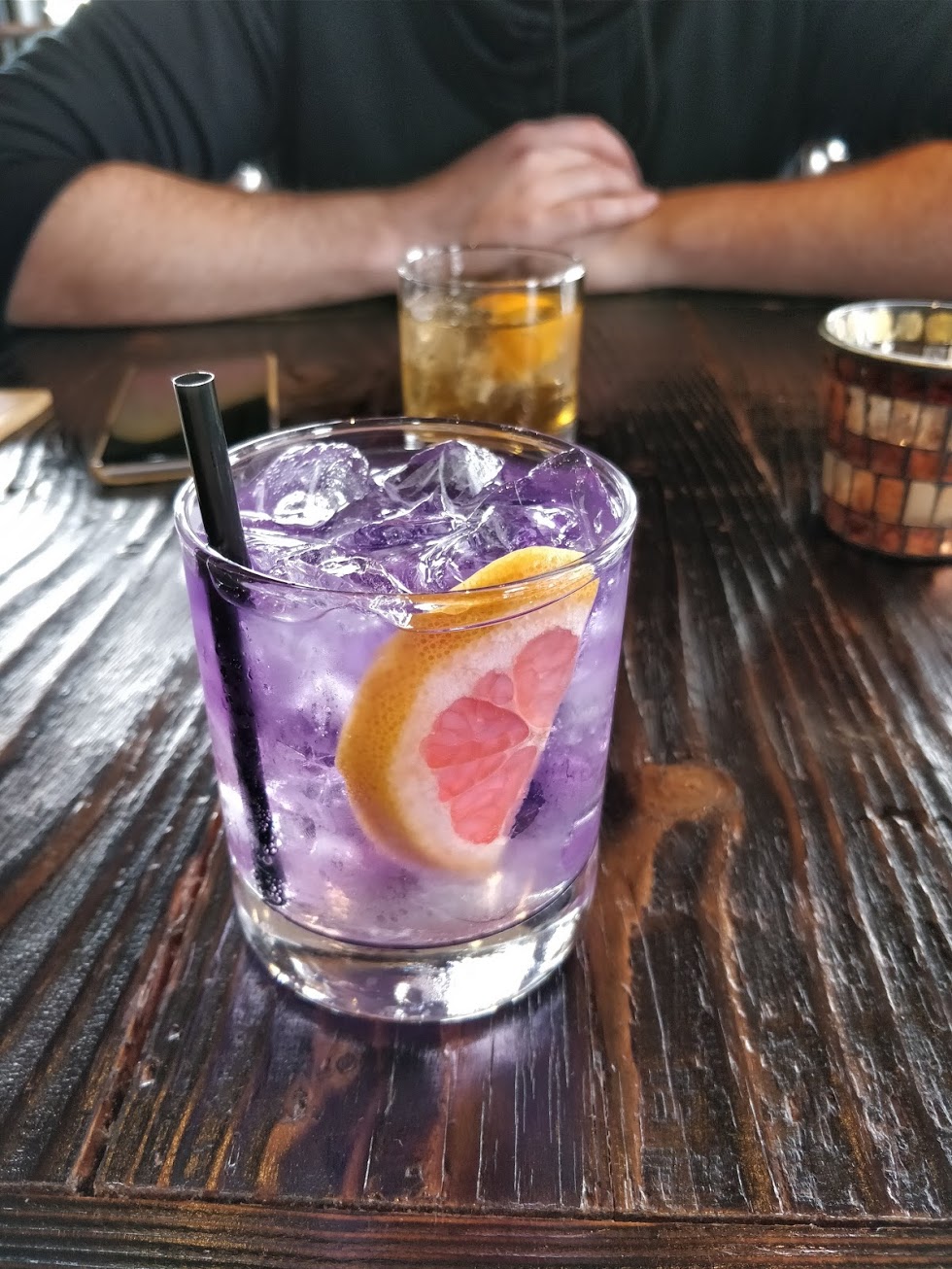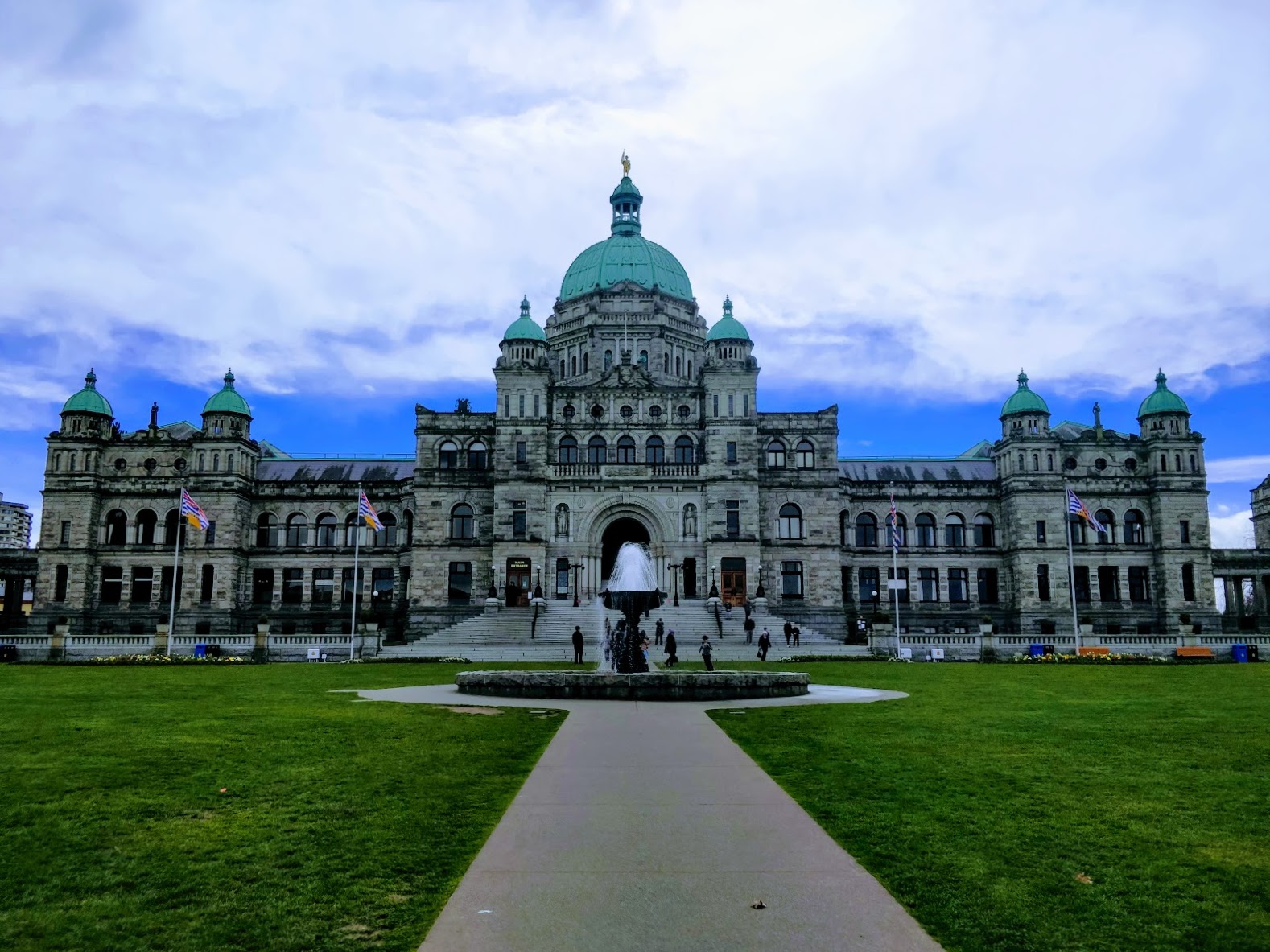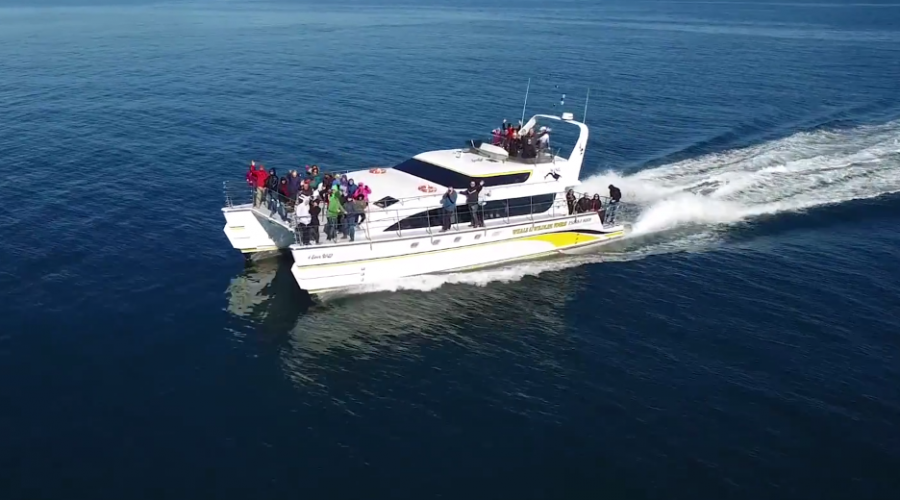We decided to keep the holiday feel going by taking a trip to The Island! Even though there are 40,000 islands of varying sizes along the British Columbia Coastline, when Vancouverites talk about The Island, they are referring to Vancouver Island. Vancouver Island is the largest island on the West Coast of North America and the biggest between Vancouver and New Zealand.
People head to the island to storm watch and surf in Tofino or Ucluelet, to hike the trails of the Pacific Rim National Forest, to ski at Mount Washington or to admire Victoria's nineteenth-century architecture. We only had a weekend for our wee adventure across the Strait of Georgia, so decided to focus our attention on the south of the island, and stay in the city of Victoria. We took a giant roll-on-roll-off car ferry, from a crazy man-made island called Tsawwassen Ferry Terminal which sticks out into the Pacific from the bottom of Canada.
Victoria is in the southern part of Vancouver Island. This area is the only part of Western Canada to dip below the 49th Parallel, which defines approximately 3,500km of USA-Canada border running from British Columbia to Manitoba. Cool! I can imagine some men ruling a line on a map, a long, long time ago.
Quick History of Vancouver Island
British and Spanish expeditions began to explore Vancouver Island in the late 18th Century. Spain started sending ships to assert their claims to the Pacific Northwest in 1774 in response to rumours of Russian fur traders making their way to the island. Britain was not far behind, with Captain James Cook landing at Nootka Sound (watchers of Taboo will recognise this highly contentious location). Spain and Britain came close to war over their claims to Nootka, but this was eventually resolved peacefully with the Nootka Convention in 1790.
This convention required Spain to turn over land and buildings they had seized the year before, and so to facilitate these negotiations, British Naval Captain George Vancouver was sent to Nootka Sound in 1792 to meet with his Spanish counterpart Juan Francisco de la Bodega y Quadra. To commemorate these talks, it was proposed that the island be named "Quadra and Vancouver Island." As Spanish interests in the region dwindled over the next 50 years so did the use of Quadra's name, until eventually in 1849 Vancouver Island became the official designation.
Because of the areas extended colonial history, the city of Victoria is home to a lot of very grand, ornate buildings and architecture. Whether this aesthetic is authentic or being played up for the tourists, I'm not sure. Nevertheless, Victoria had a very different feel to mainland Vancouver.

Victora is British Columbia's capital city and as such the BC parliament sits here. We had just missed a guided tour but headed inside (through metal detectors etc.) to have a look around. The decor is very similar to that of the New Zealand parliament buildings, with lots of intricate, gold ceiling decorations. As Canada is a Commonwealth realm and constitutional monarchy (like NZ), there are lots of portraits of Queen Elizabeth II, and multiple stained glass windows depicting various important moments in her relationship with Canada.
Throughout the Rocky Mountains, and to a lesser extent the rest of Canada, there is a range of supremely grand hotels under the name Fairmont. These hotels were built by the Canadian Pacific Railway, who ran a passenger train service across Canada. They were constructed along the train route in both urban centres and locations with unique scenery, to house elite passengers travelling on the CPR trains. The hotels were built to look somewhat similar to European castles, except for a few like the Château Montebello, which was for quite some time the worlds largest log building.
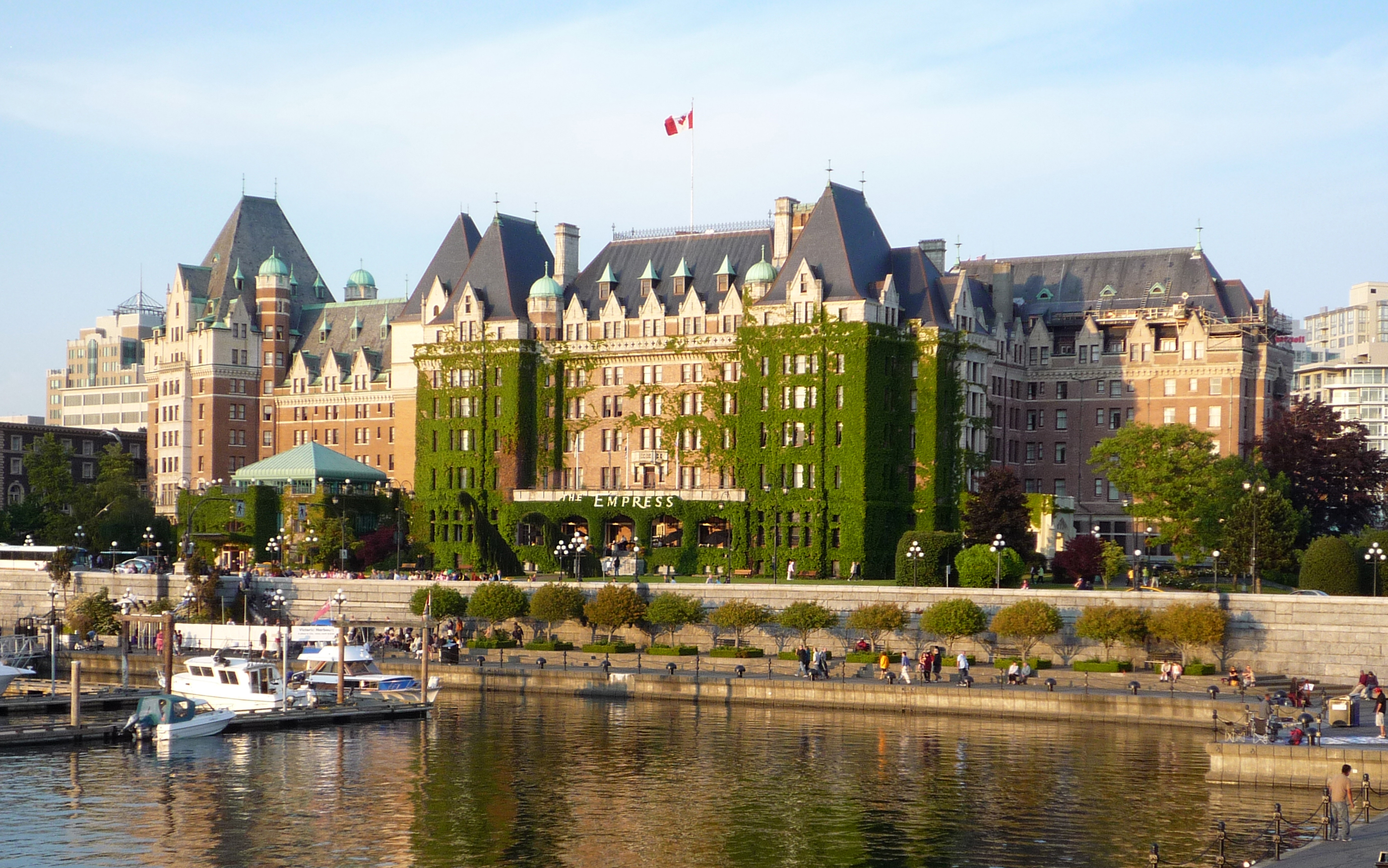
The Empress Hotel, one of Fairmont's world-famous properties, is located on the Victoria waterfront. The building definitely lived up to the brand; gigantic, opulent, with harbour views and manicured gardens - it ticked all the 'Fairmont' boxes. Amongst the gardens, we spotted a group of beehives and later found out that the hotel produces and sells its own honey!
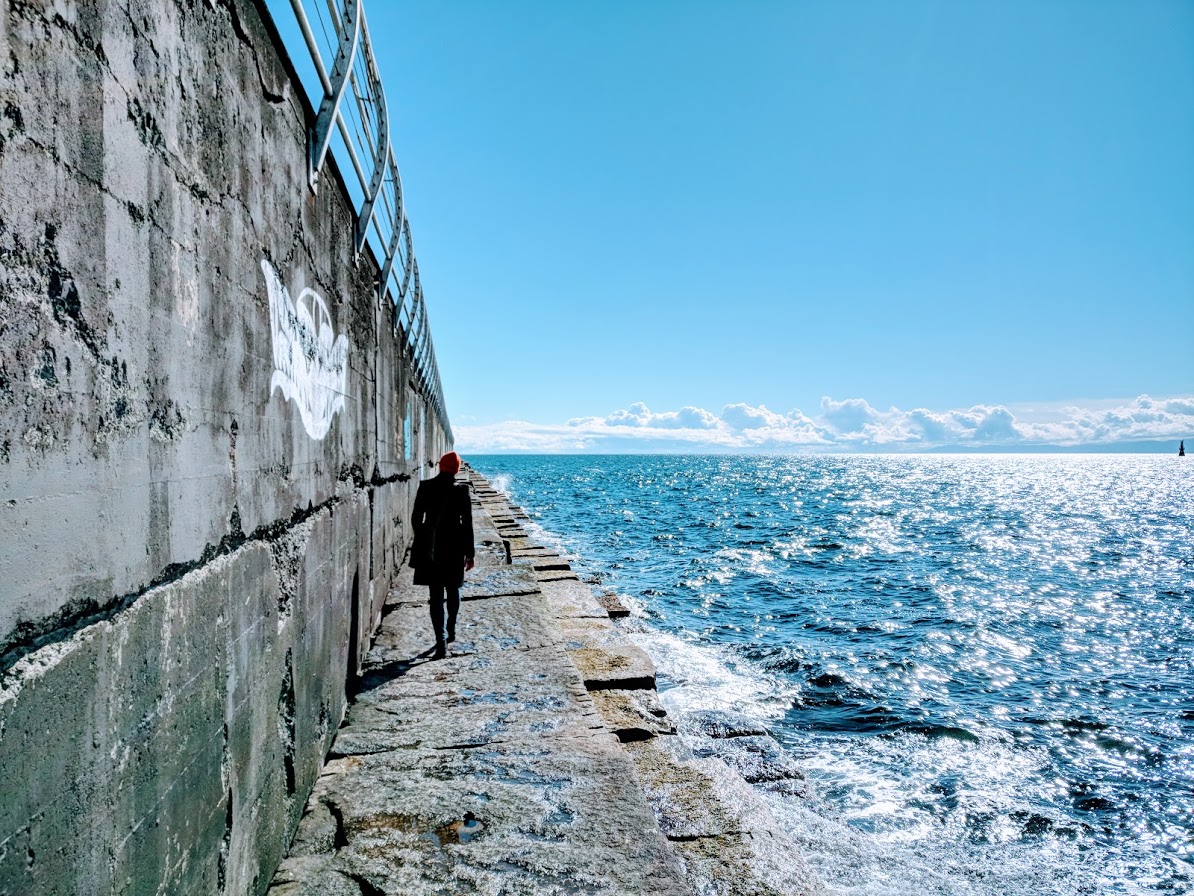
We went for a walk down to the Ogden Point Breakwater, which is a 762m sea wall made from rubble, concrete and granite that juts out into the ocean at the end of Victoria harbour. Work began on the breakwater in 1913, and the last granite block was placed in January 1917. The design of the breakwater is a rubble mound topped with a mass concrete wall, with granite blocks set along the weather side to protect both the wall and the rubble. By completion over 1,000,000 tonnes of quarried rubble had been dumped from scows onto the mound, and at least 10,000 granite blocks (weighing at least another million tonnes) had been maneuvered into place using custom designed derricks and steam engines. The derricks were huge machines, as each granite block weighed between six and eight tonnes. It was amazing to see the marks along the edges of the blocks from the workmen who had split and shaped them over a hundred years ago.
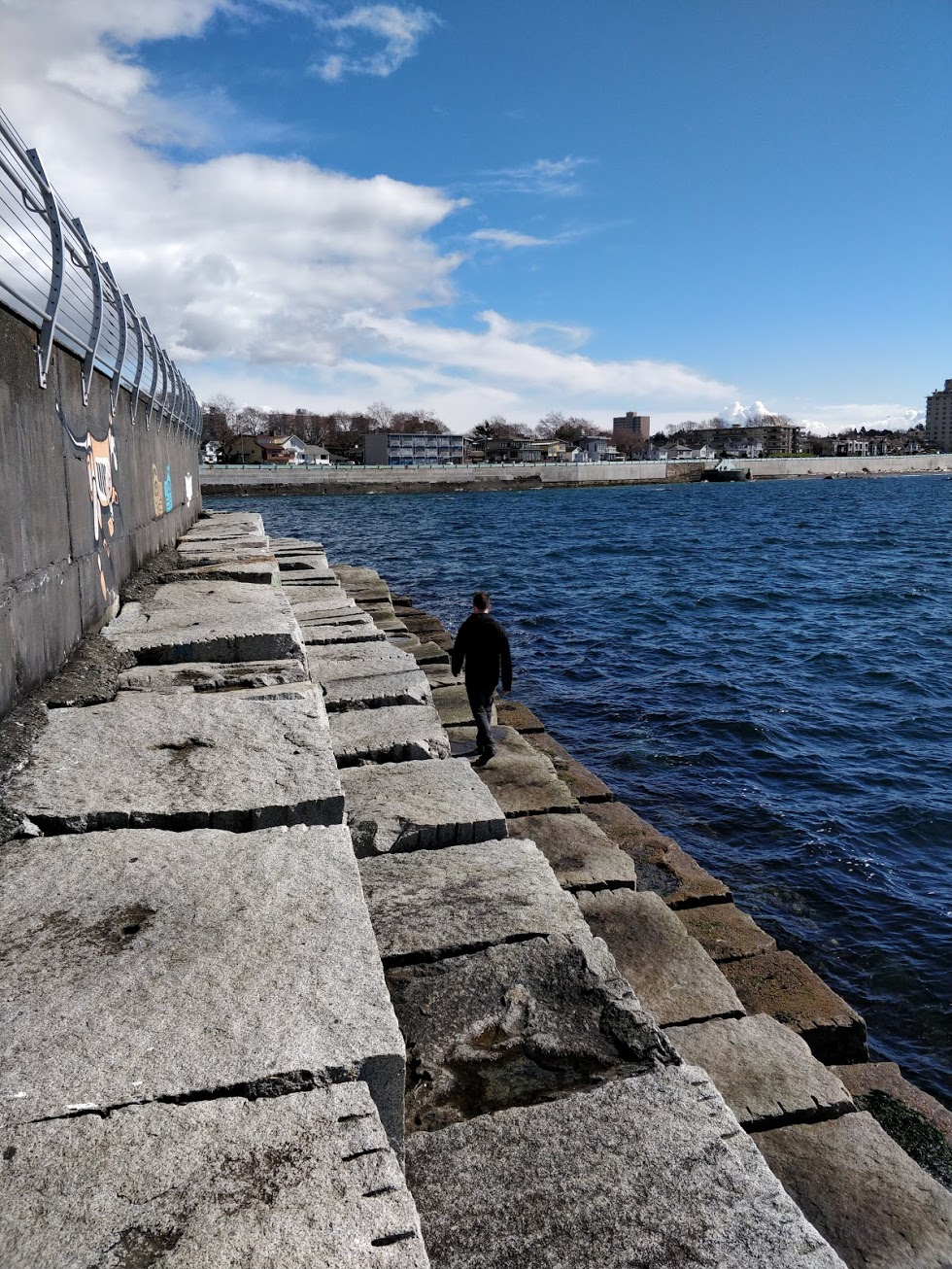
Whale watching is big business on the island, as there are both resident and transient orca whale pods who frequent the area along with humpback and minke whales who use the Island as a stop on their annual journey between the tropical and polar waters.
The whale tour companies do not guarantee sightings of Great Whales at this time of the year, but prices nonetheless are approximately $120 per person. EEEK! Katie found a company called Eagle Wing Tours who offered a great deal for teachers, so we decided that even if we didn't see whales, it might still be a nice day out on the water.
Quick Background on Orcas
Orcas have three common types, which are generally considered to be different races, subspecies, or possibly even species:
- Resident: These are the most common on the west coast, generally living in large families and visiting the same areas consistently. They mainly eat fish and squid. In the past 30 years, researchers have identified and named over 300 resident killer whales by differences in their markings (such as the grey or white area around the dorsal fin, known as the saddle patch, which differs from whale to whale).
- Transient: These whales are only known to eat marine mammals, such as seals. They live and travel in small groups of two to six. They typically roam along coastal waters, without spending much time in any particular place. Their saddle patches are uniformly grey.
- Offshore: Not much is known about this type, but they have been seen in open water in groups of 20-75, with occasional sightings of groups of up to 200. They are genetically distinct from the other types, and are smaller with more rounded dorsal fins. It's believed they eat mainly fish, but based on some of their physical characteristics and injuries it's postured that they may also eat mammals and sharks.
Resident orcas are the most commonly seen whales around Vancouver Island, but their numbers are in decline. At least 80% of their diet consists of Chinook Salmon (each whale eats about 20 salmon per day), but climate change and pollution are severely impacting the population of these salmon along the west coast. The current southern resident killer whale population of 76 needs to capture about half a million of these fish per year. The 50-year outlook is not good for west coast salmon, with 14 of the current 31 species expected to disappear.
We walked to Fisherman's Wharf (where the whale watching tour departed from) and were surprised to find a community of floating houses and businesses! Not just boats in which people lived, but purpose-built houses floating in the water, tied up with ropes to the pier.
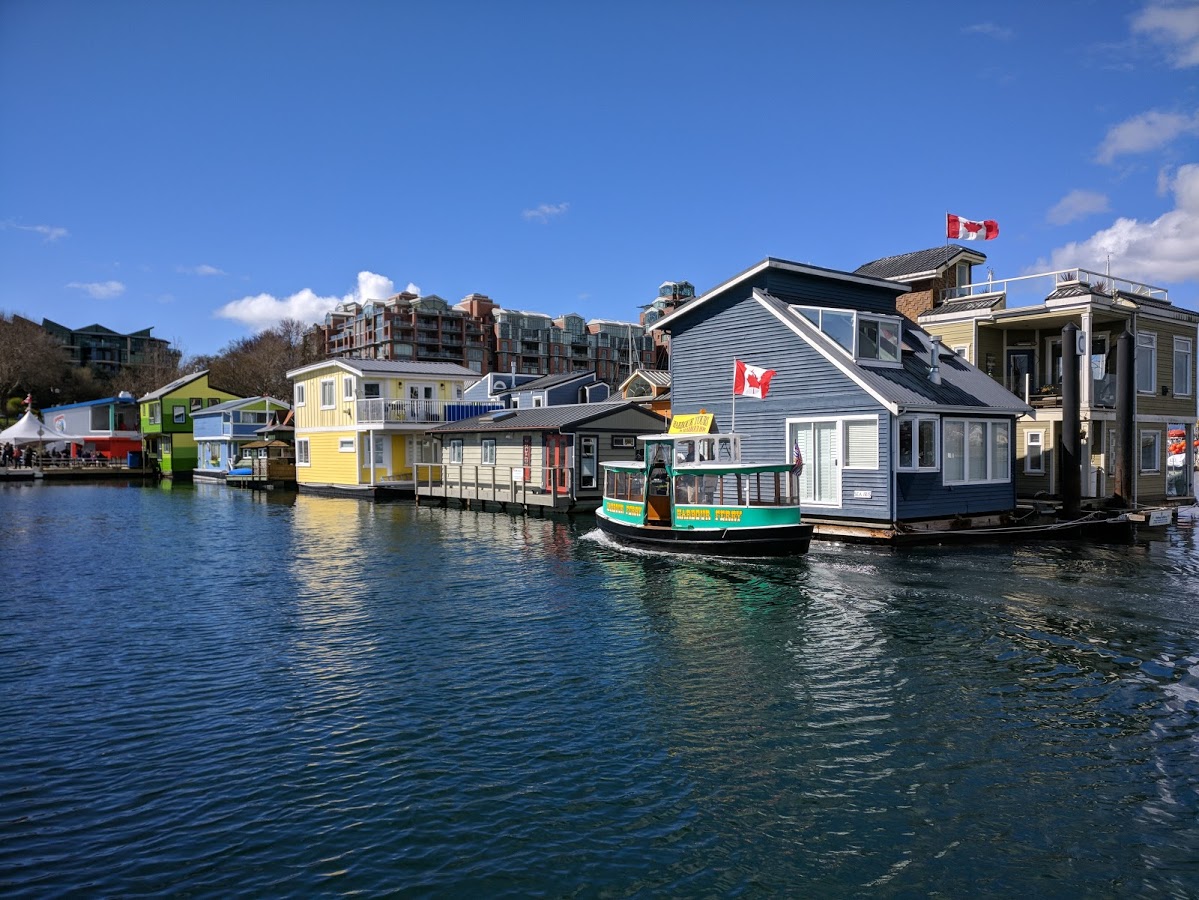
Along with about 50 other passengers, we boarded the partly enclosed catamaran. They gave us rain jackets and gloves - which Katie really appreciated. The day started off sunny and beautiful, but didn't stay that way for the entire trip. At one stage it was even hailing! Luckily it cleared up by the time we found the whales.
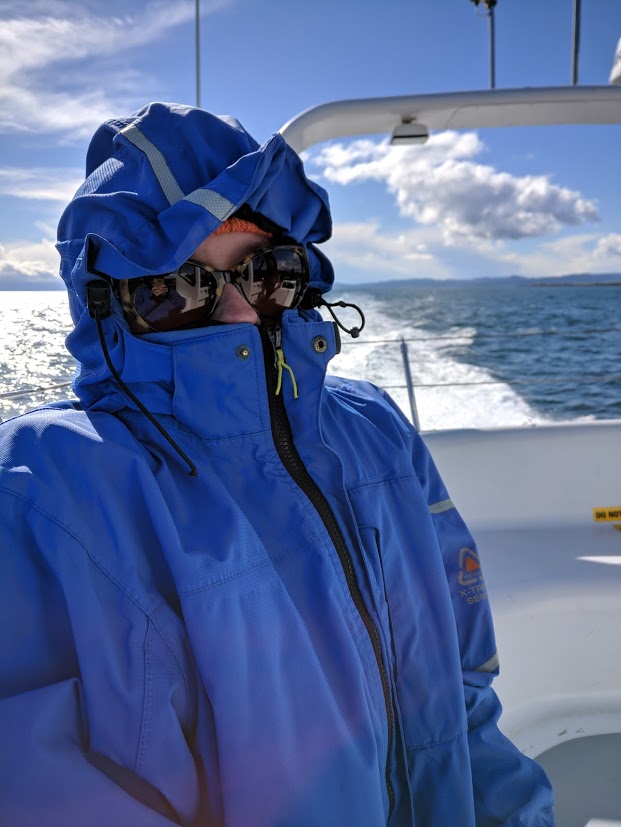
The captain was a chatty guy, and enthusiastically shared lots of information and stories of his experiences with us. We were very impressed by the effort companies like Eagle Wing Tours were exerting to preserve and protect the wildlife in the area. It's in their interest to preserve their business, after all. People who work in the whale watching community on Vancouver Island have developed their own regulations (over and above those of Canada and USA), to more heavily restrict the time tour boats spend with the whales and the distances and conditions around viewing the whales. It was great to see an industry working hard to share local knowledge, regulate themselves, educate their community, and contribute to conservation efforts.
Whales hadn't been spotted in the area for about four days, however, as we were setting off one of the crew on board received a message about a sighting of a pod of orca whales heading south down the Strait of Georgia. The tour companies in the area work together to share and communicate any sightings that they have. As we headed out, we overheard the captain of the boat talking to other captains to pin down the pod's exact position and trajectory. It took us about 2 hours to get to the right spot, and along the way we saw bald eagles swoop down from the trees and harbour seals sun-bathing on the rocks. Once we spotted the pod, we moved down the Strait of Georgia alongside about ten orcas for over an hour. The orca whales weren't in any rush and were quite happy to show us what they could do; spy hopping, breaching and tail slapping. They are amazing and beautiful! We didn't bother trying to take any photos; our cameras wouldn't have captured them very well, so instead chose to enjoy the experience first hand. It is fair to say we both have a new appreciation for orca whales.
On the way back to the ferry terminal at Swartz Bay we stopped off in a town called Sidney to visit the Victoria Distillers. They had recently moved to this new location (after previously inhabiting the back room of a local winery), and the facility was very trendy, sleek and shiny. We took a tour of the distillery and learnt about the distillation process and the products they produce. Sean thinks that being a distiller is like being a mad scientist.
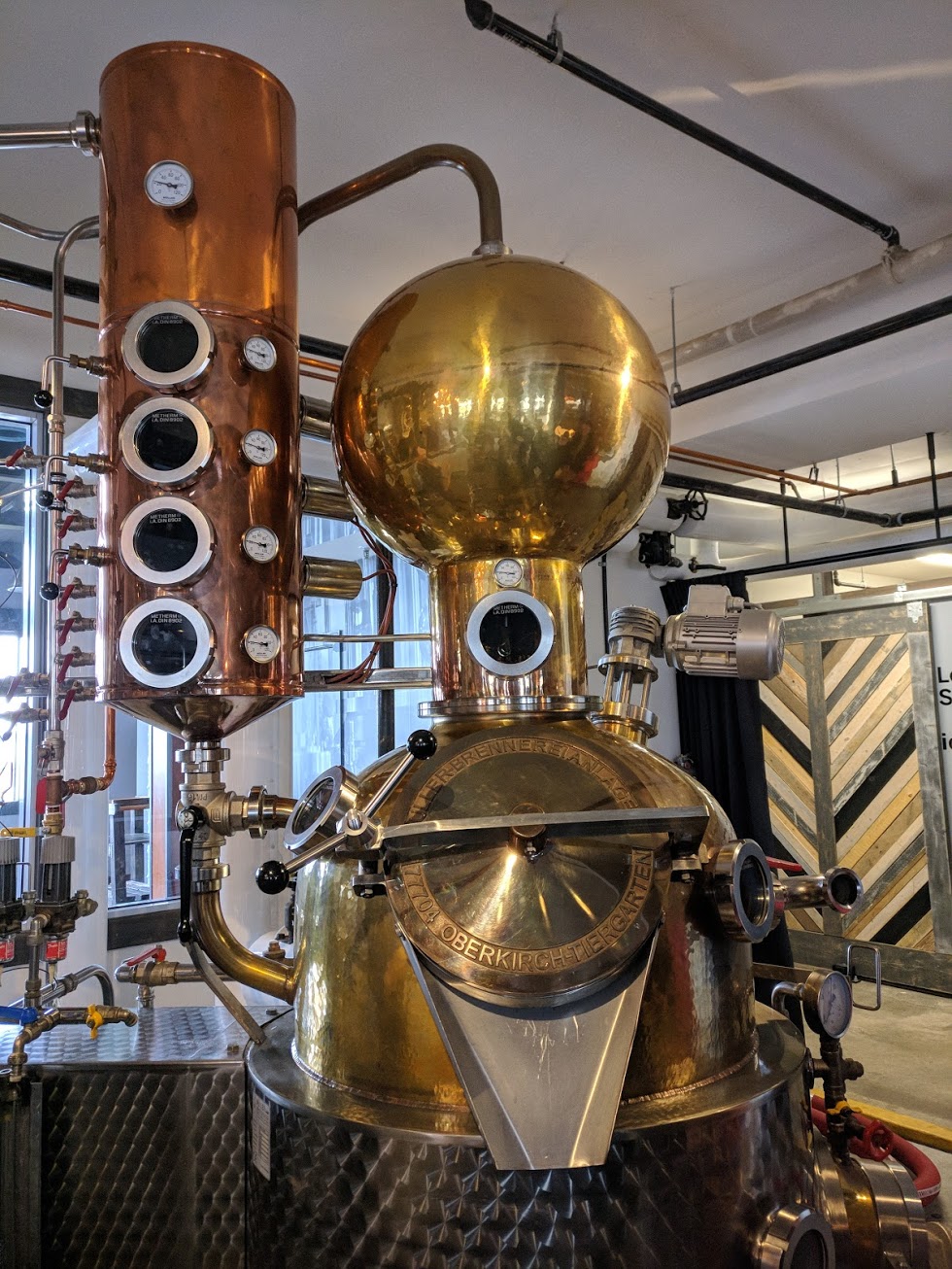
Their flagship product is gin, but they also produce vodka, chocolate liqueur, rum, and bitters. Their most recent release was created for the Fairmont Empress' re-launch. The distillery took inspiration from the tea that the Empress produces and serves in-house. The tea blend uses orange peel and butterfly pea flower. These flavours are incorporated into the gin! They add the flower to the gin after distillation, to impart a beautiful colour.
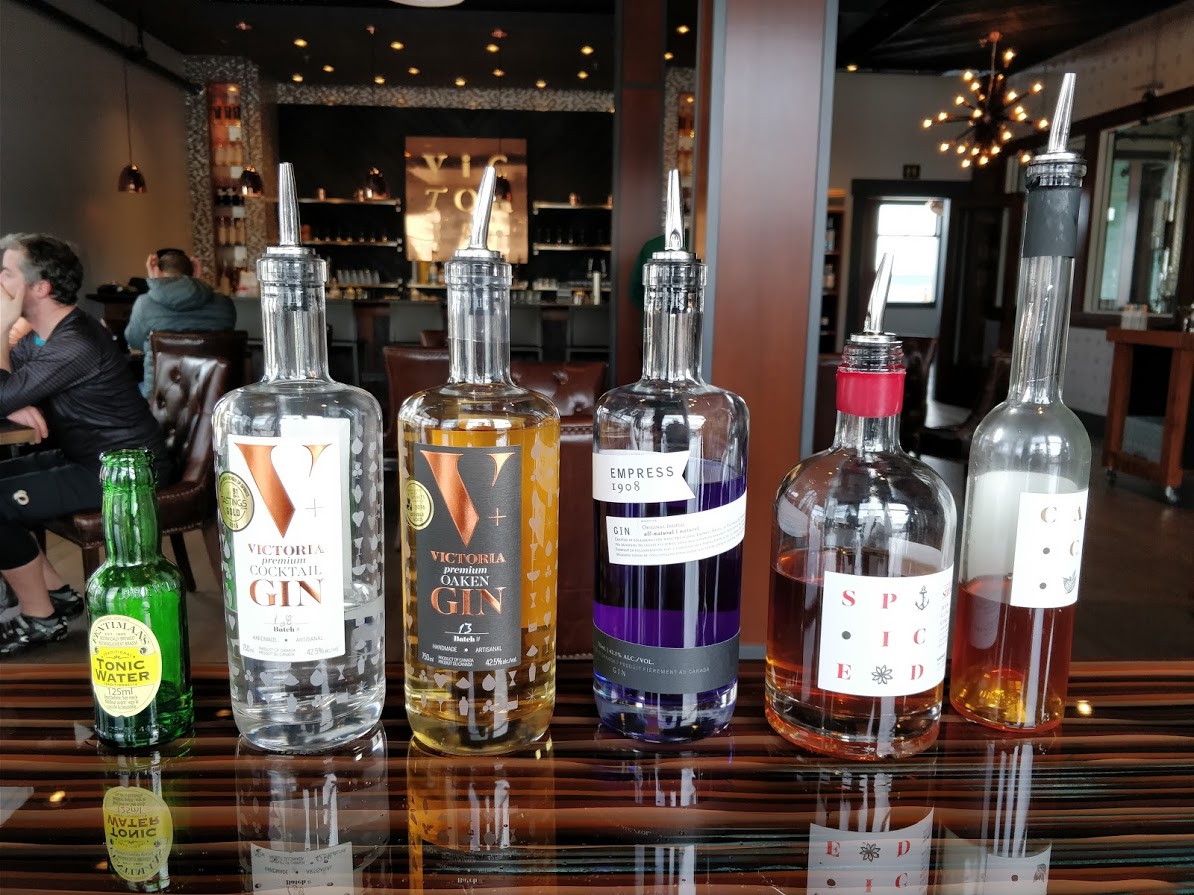
It turns the gin purple! What is even more impressive is that the flower acts as a pH indicator, so when mixed with tonic it turns the whole drink pink. When combined with something alkaline, it turns turquoise. Needless to say, we couldn't resist buying a bottle. Every time we have a gin and tonic at home, it's like a magic show!
